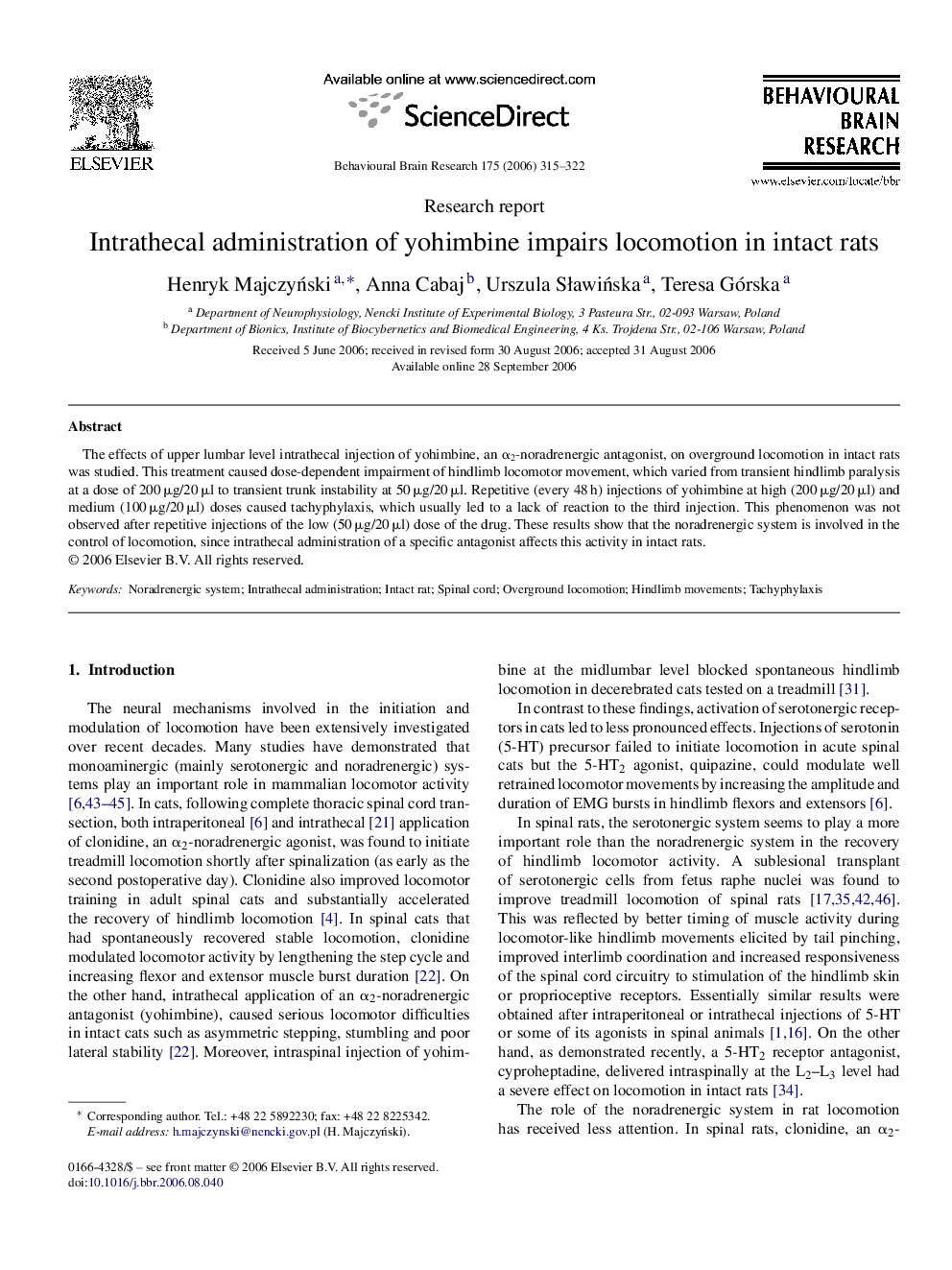| Article ID | Journal | Published Year | Pages | File Type |
|---|---|---|---|---|
| 4315901 | Behavioural Brain Research | 2006 | 8 Pages |
The effects of upper lumbar level intrathecal injection of yohimbine, an α2-noradrenergic antagonist, on overground locomotion in intact rats was studied. This treatment caused dose-dependent impairment of hindlimb locomotor movement, which varied from transient hindlimb paralysis at a dose of 200 μg/20 μl to transient trunk instability at 50 μg/20 μl. Repetitive (every 48 h) injections of yohimbine at high (200 μg/20 μl) and medium (100 μg/20 μl) doses caused tachyphylaxis, which usually led to a lack of reaction to the third injection. This phenomenon was not observed after repetitive injections of the low (50 μg/20 μl) dose of the drug. These results show that the noradrenergic system is involved in the control of locomotion, since intrathecal administration of a specific antagonist affects this activity in intact rats.
